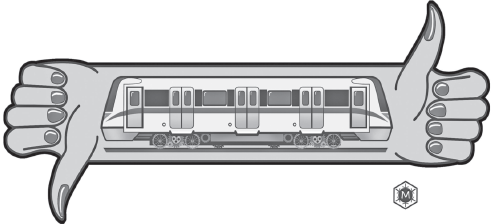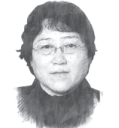|
MA XUEJING/CHINA DAILY |
Editor's note: The decision of local authorities in Shenzhen, South China's Guangdong province, to run some women-only coaches on several metro lines as a pilot project has sparked a public debate. Three scholars share their views with China Daily's Wu Zheyu on the issue. Excerpts follow:
Welcome move in the right direction
|
Li Yinhe, research fellow at the Institute of Sociology, Chinese Academy of Social Sciences [Photo/China Daily]
|
People should realize the intention behind the proposal is good-to help women avoid some of the rough and tumble of commuting by public transport and protecting them from sexual harassment. Thus the move is neither gender-biased nor an attempt to separate men and women.
History has many examples of segregation, such as racial segregation. In the US, for example, the Montgomery Bus Boycott started on Dec 5, 1955, four days after Rosa Parks, an African-American woman, was arrested for refusing to yield her seat to a white man on a Montgomery bus. The boycott that lasted more than a year ultimately forced the US Supreme Court to declare the segregated seating unconstitutional and order Montgomery to integrate its bus system. But the Shenzhen metro pilot program cannot and should not be compared with racial segregation.
Radical feminists may still criticize the move, saying it could worsen the gender disparity. Average or radical, all feminists pursue equal rights for women. The difference is that moderate feminists accept there exists a gap between men and women in terms of physical strength while radical ones refuse to recognize any difference between them.
I disagree with radical feminists. only if we accept the difference between genders can we chart the course for pursuing equal rights. The National People's Congress, for instance, has a minimum ratio for female deputies-at least 20 percent of the total number-which is a good way of protecting women's political rights. In the absence of the minimum ratio, the number of female deputies could drop drastically.
The fact is, women are the disadvantaged lot in crowded buses and metros, and many of them become victims of sexual harassment. In this regard, the pilot offering women special cars in metros is a move toward narrowing the gender gap. A survey can show the acceptability level of the pilot project as well as expose the loopholes in it, which can then be plugged.
Focus should be on punishing molesters
|
Pei Yuxin, associate professor of School of Sociology and Anthropology, Sun Yat-sen University [Photo/China Daily]
|
I'm not denying the good intention behind the proposal. But it may not achieve the desired results. One can safely assume the number of women-only cars will be limited-especially because the total number of subway cars will not increase-and therefore women could end up wasting more time queuing up for the "safe" cars.
Given the already high pressure under which metros operate, the additional manpower and material costs required may prompt people to ask whether it's worth having the change.
Another fallout of the move could be women facing ridicule for complaining or protesting against sexual harassment while traveling in general metro coaches, with the common refrain of male passengers probably being "why don't you travel in the women-only cars?"
The proposal reminds one of the racial segregation in the US until 1964.
Will the pilot plan compel people to believe that the only effective way of protecting women from sexual harassment is by separating them from men in public transport?
By providing special cars for women to ensure they "travel safely", the metro authorities are shirking their responsibility of keeping habitual sexual harassers at bay and handing over the serious offenders to police.
People have neglected the severity of this problem for too long. Every time a sexual harassment case comes to light, people tend to blame the girl or woman for having invited the agony with her behavior, instead of holding the molester accountable.
There's still a long way to go to protect women's rights. Perhaps the authorities could start by maintaining a list of sexual harassers, and naming and shaming them if they don't mend their ways.
Debates good for protecting rights
|
Ji Yingchun, professor of School of Sociology and Political science, Shanghai University
|
I'm glad to see this topic being discussed. But a debate on sexual harassment should involve more than just women-only subway cars.
Introducing the women-only cars can only be the beginning of the lengthy process of fostering gender equality amid continued discussion on the issue. The discussion will allow men and women both to gradually reach a consensus on what constitutes sexual harassment. This is important because, for example, many men say one cannot be accused of sexual harassment for just looking at a woman, without realizing there is a sea of difference in just glancing at and gazing at, gawking at, ogling at or leering at a woman. Many men can terrify a woman just with their gaze. Wouldn't it be a good idea therefore to install cameras in metros to identify and keep record of such men?
In our society, girls are always taught to protect themselves and watch out for the bad guys. Some girls even learn to tolerate minor misbehaviors. If more girls are encouraged to express their likes and dislikes, the public code of ethics will become more balanced, and men will realize sexual harassment can land them in trouble.











